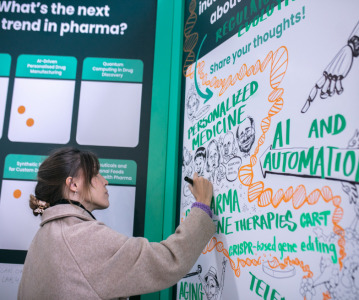Type 2 Diabetes Next Generation Therapeutics Create Vast Opportunities in Europe

Type 2 diabetes is one of the most significant global health concerns of modern times. According to the International Diabetes Federation, more than 55 million people have been diagnosed with diabetes in Europe in 2012, and this number is expected to rise to 64 million by 2030.
A recent research by Frost & Sullivan, “Global Type 2 Diabetes Therapeutics Market”, covers the European region in detail, as well as other key markets worldwide. The European market earned revenues for €9.50 billion in 2009 and is estimated to reach €15.46 billion in 2017, at a CAGR of 3.8%.
Due to the chronic nature of the disease and the numerous co-morbidities that make patients particularly sensitive to long-term drug safety, the clinical and regulatory hurdles are considerable. However, the immense size of the potential market has stimulated a vast and growing pipeline of prospected new therapies aimed at addressing the unmet needs of tighter glucose control, improved safety profiles, and greater convenience to patients.
Overall, the growth rate of the insulin segment was estimated to be about 52% of the total European type 2 diabetes therapeutics market in 2012, exceeding that of the non-insulin segment.
“The insulin segment of this market is boosted by the improvements seen with modern insulins, including improved pharmacokinetic profiles and reduced risk of hypoglycaemia - the main drawback to insulin therapy,” notes Aiswariya Chidambaram, Healthcare Senior Research Analyst at Frost & Sullivan. “Several insulin analogues in development have the potential to offer better overall outcomes resulting from their liver-targeted action.”
The biggest challenge to UK diabetes care is the reform of commissioning structures, combined with €40.61 billion efficiency savings, which results in reductions in specialist treatment. In Germany, on the other hand, the need for a consistent national diabetes plan remains the key area of focus. The growth of the market is expected to depend on testing volumes, which are in turn expected to drive growth for diabetes diagnostics and therapeutics. Quite a few new product launches are expected in the next two years, leading to further market expansion.
French health authorities are tackling diabetes in the broader framework of the fight against chronic disease and promotion of improved nutrition, both of which are included in the national framework plans. In addition, diabetes patients benefit from full reimbursement of all treatments and supplies.
Moving to southern Europe, the Italian Drugs Agency has introduced new, potentially innovative drugs with monitoring projects that seek to define the future role of new medicine in clinical practice. Focus on integrated diabetes management and care is likely to bring multiple diabetes services under one roof. The key issues faced by the diabetes associations in Italy include long waiting lists, lack of specialized personnel, and adequate medical equipment. Spain is a region where the prevalence of gestational diabetes was as high as 8.8 percent in 2011. However, the country has started to introduce telemedicine at hospitals for diabetes care, which is likely to provide faster and improved access to diabetes care.
In northern Europe, the Ministry of Health of the Netherlands is for instance tackling key challenges such as prevention care, understanding the impact of the bundled payment approach on healthcare and multi-morbidity. In Norway, according to the National Diabetes Association, the greatest challenges over the next two years will include the roll out and financing of the National Strategy for Diabetes as well as the establishment of diabetes registers with cent per cent coverage. Anticipated challenges over the next two years in Sweden include implementation of patient-focused diabetes care, research, and education, while Finland is regarded as the first country in the world to have introduced a comprehensive diabetes programme with annual and biennial check-ups provided to patients.
“All in all, research advances in novel pathways, such as the neuroendocrine system, will produce next-generation antidiabetic drugs with improved efficacy and safety profiles, creating opportunities for successful market penetration with enhanced and more effective formulations,” concludes Chidambaram. “The recent discovery of how metformin works, in addition to accumulating evidence of off-target beneficial effects including cardioprotection, will lead to an improvement in drug tolerability and the discovery of novel therapies based on the glucagon-targeted mechanism. These efforts will generate affordable, highly effective therapies with enhanced long-term safety and efficacy and better clinical outcomes.”
Related News
-
News Lessons from CPHI Milan 2024: Sunny Intervals for Pharma Manufacturing?
As the 2024 CPHI conference wrapped up in Milan, we caught up with L.E.K. Consulting – a global strategy consulting firm with deep expertise in pharma manufacturing – to discuss evolving market perspectives and business outlook. -
News US BIOSECURE Act passed by US House of Representatives
The controversial act, which has already impacted several foreign companies operating in the US, was passed by the House of Representatives on September 9, 2024. It is now headed for the US Senate before it can be signed into law by President Joe Biden... -
News Pharma Supply Chain People Moves
The latest appointments, promotions, and structural changes across the pharmaceutical supply chain. -
News Drug prices agreed upon as part of the US Inflation Reduction Act
The Inflation Reduction Act brought into constitution by the Biden administation in 2022, which proposed a drug price negotiation between the government and pharmaceutical companies, has reached it's first agreement. -
News BIOSECURE Act continues to loom over Chinese pharma manufacturers
With the US BIOSECURE Act on its way to passing into legislation, Chinese companies are facing declining revenues within the first half of 2024 as US pharmaceutical and healthcare companies pull their businesses from the country. -
News Ophthalmologic drug product Eylea faces biosimilar threats after FDA approvals
Regeneron Pharmaceutical’s blockbuster ophthalmology drug Eylea is facing biosimilar competition as the US FDA approves Biocon’s Yesafili and Samsung Bioepis/Biogen’s Opuviz. -
News ONO Pharmaceutical expands oncology portfolio with acquisition of Deciphera
ONO Pharmaceutical, out of Japan, is in the process of acquiring cancer-therapy maker Deciphera Pharmaceuticals for US$2.4 billion. -
News First offers for pharma from Medicare drug price negotiations
Ten high-cost drugs from various pharma manufacturers are in pricing negotiations in a first-ever for the US Medicare program. President Biden’s administration stated they have responded to the first round of offers.
Position your company at the heart of the global Pharma industry with a CPHI Online membership
-
Your products and solutions visible to thousands of visitors within the largest Pharma marketplace
-
Generate high-quality, engaged leads for your business, all year round
-
Promote your business as the industry’s thought-leader by hosting your reports, brochures and videos within your profile
-
Your company’s profile boosted at all participating CPHI events
-
An easy-to-use platform with a detailed dashboard showing your leads and performance




.png)
.png)

.png)